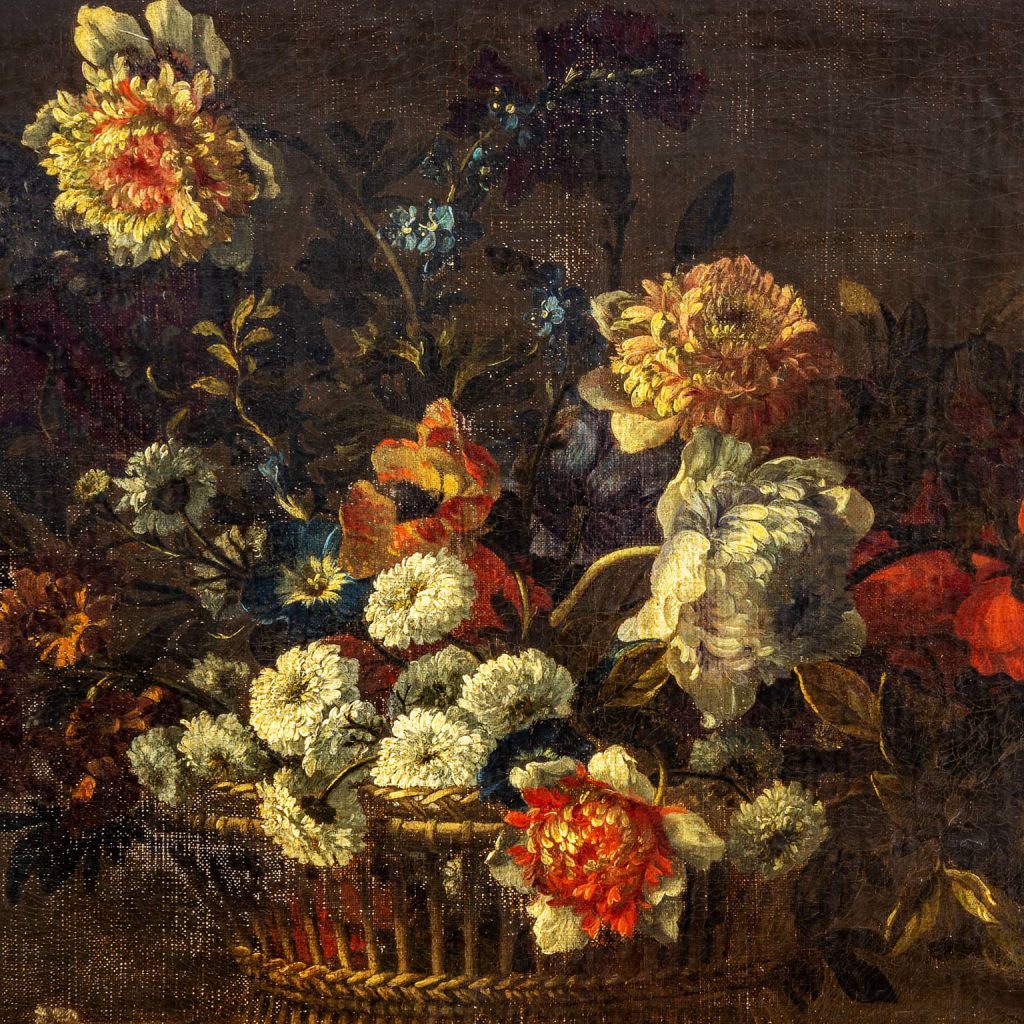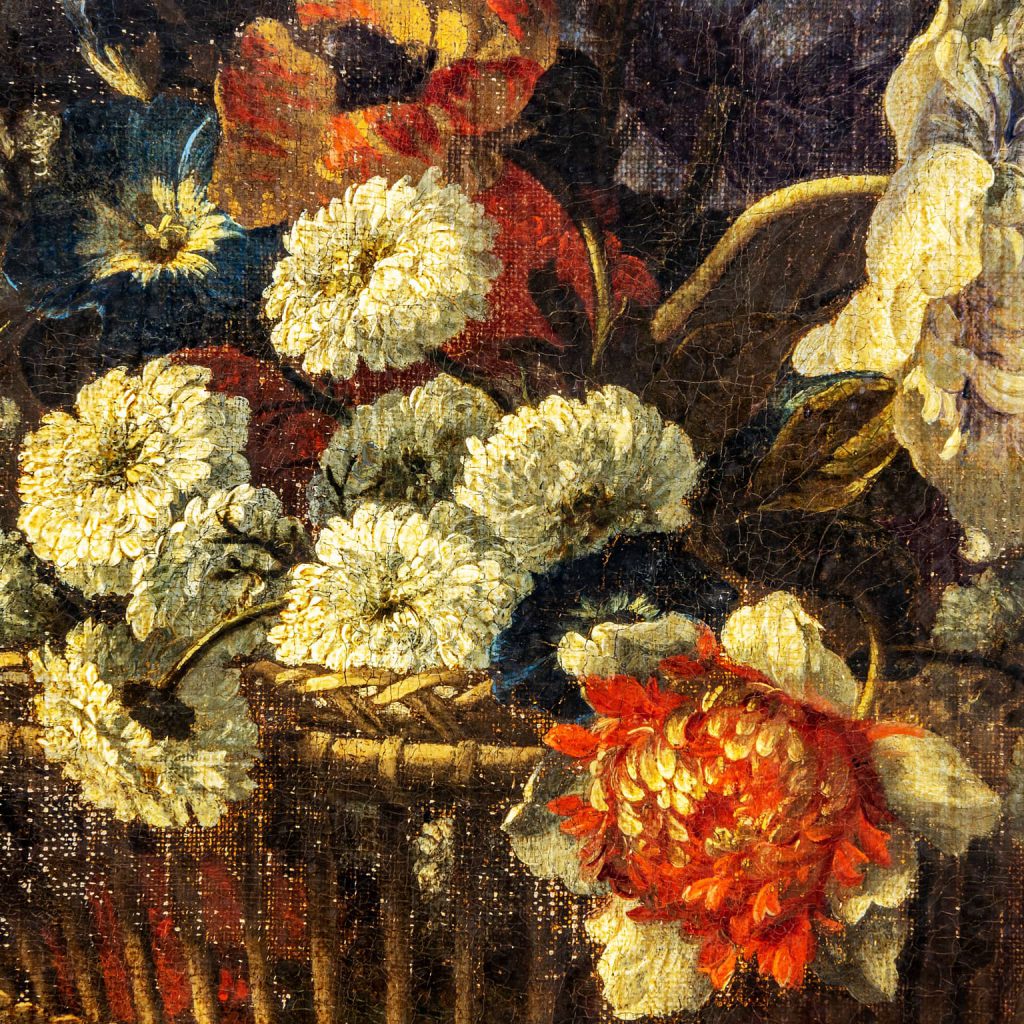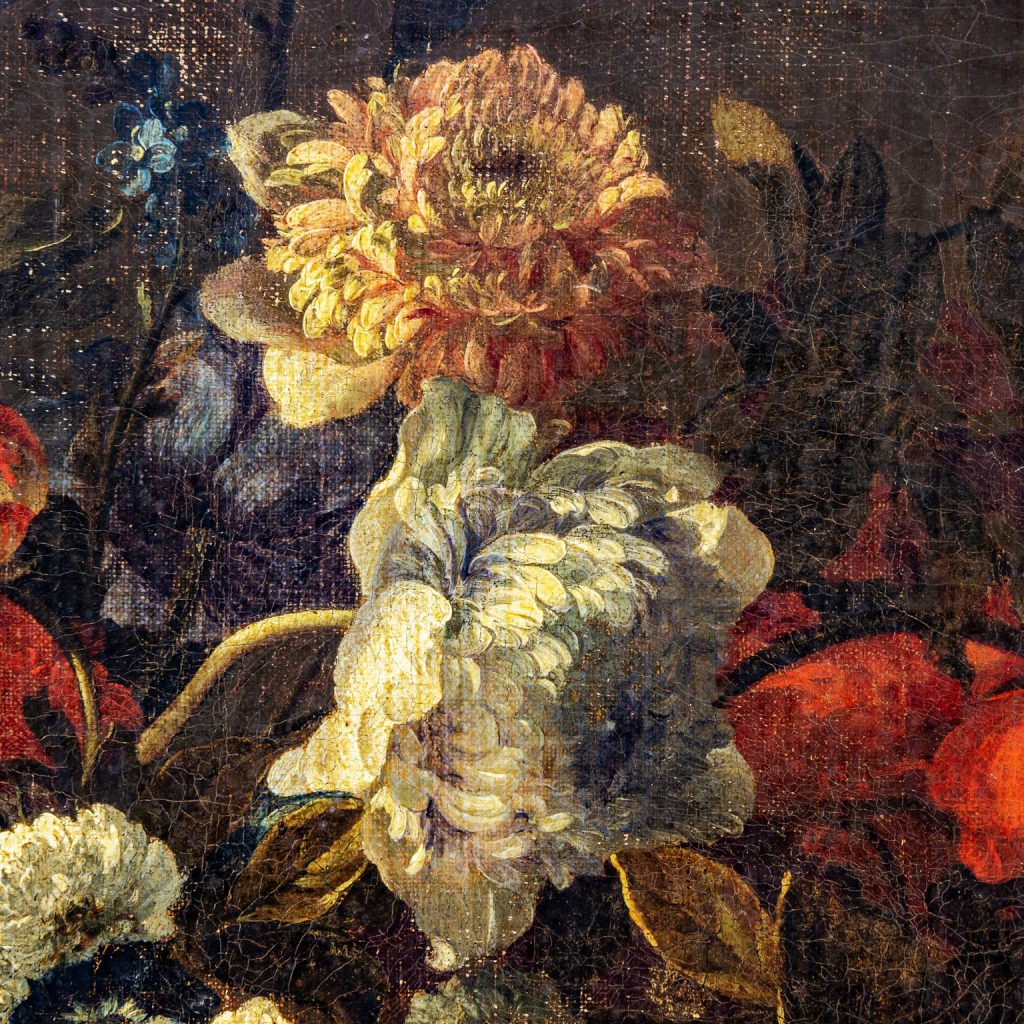Basket of flowers on a shelf – Antoine Monnoyer, second-third decade 18th century
Antoine Monnoyer (Paris 1677 -St. Germaine-en-Laye 1745)
Oil on canvas
Description:
On the top of a table, in an environment absolutely devoid of background or any other architectural element, there is a wicker basket full of flowers: the variety of these is extremely wide, both in species and in colors, and the composition is very “Wild”, with some small white flowers that have fallen on the support surface, as if the full basket had just been set down after the harvest.
The colors, albeit variegated, are delicate and the flowers emerge from the totally dark background with an absence of contours that enhances the three-dimensional effect, giving light to the work.
Precise the pictorial details of the weaving of the basket.
The work shows traces of minimal restorations (small areas of millimeter size); it has been re-stretched and re-tensioned on an ancient frame, and is presented in an old, re-adapted frame.
Dimensions: 37.5 x 47.5 cm. 57 x 67 cm with frame
CODE: ARARPI0107607
Historical-critical analysis:
The attribution of the work to Antoine Monnoyer is validated by the expert opinion of Gianluca Bocchi.
Antoine Monnoyer inherited the artistic genius of his father Jean-Baptiste (Lille 1636 – London 1699), the greatest French floral artist of the second half of the 17th century. He had laid the foundations for a highly decorative pictorial genre, in which flora and often also fruit become the undisputed protagonists, overflowing with metal baskets, baskets or placed on shelves decorated with classical motifs.
Antoine began his career in London, active in prestigious commissions such as Burlington House and Kensington Palace, procured for him by the famous ambassador Lord Montaigu. These years are characterized by a close collaboration with the parent and a real imitation of his art, so much so as to deserve the nickname Young Baptist.
On the death of his father he moved first to Rome and then to Paris, where he remained until 1709 as a collaborator of his brother-in-law in Versailles. Here he was introduced to the Académie de Peinture et de Sculpture, under the protective wing of Blin de Fontenay. He was influenced by the formal solutions, so much so as to change the description of the flowers towards a refined lightness and softness of touch. From here, due to personal differences with his relative, he left for Rome and on a tour through the most important European capitals. The influence that the Capitoline city had on the artist’s corpus can be seen above all in the way of working: if the father preferred to take it from life, ours takes from the Roman artists the custom of using cartoons to be reproduced identical in different compositions, to the in order to satisfy the market demand.
The canvas in question, as Bocchi indicates, belongs precisely to this more advanced period, during which the artist fires works by now stylistically connoted and attributable to his production and for which a series of similar works are now known.
Bibliography:
–C. Salvi, Antoine Monnoyer, in Pittori di natura morta a Roma. Artisti stranieri 1630-1750, a cura di G. Bocchi e U. Bocchi.
- Basket of flowers on a shelf – Antoine Monnoyer, second-third decade 18th century

Antiques, Art and Design
FineArt is the new ambitious Di Mano in Mano project that offers an exclusive choice of antiques and design works, presenting them for their singularity and uniqueness.





